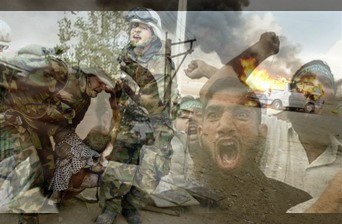New Military Toys; the Good and Bad
After spending 15 years on R & D, the Pentagon is outfitting soldiers for a high-tech battlefield network designed to cut through the fog of war. Popular Mechanics tests out the high-tech package and discovers why America's wireless warriors think it will slow them down in Iraq.
But as Alpha kicks in doors, rounds up terror suspects and peals off automatic fire in deafening six-shot bursts, not one of the soldiers bothers to check his radio or look into the eyepiece to find his buddies on the electronic maps. "It's just a bunch of stuff we don't use, taking the place of useful stuff like guns," says Sgt. James Young, who leads a team of four M-240 machine-gunners perched on a balcony during this training exercise at Fort Lewis, Wash. "It makes you a slower, heavier target."
But on the eve of what should be the program's biggest success, support for Land Warrior is crumbling. In the halls of the Pentagon there's a pitched battle being waged over Land Warrior's long-term budget and its long-term future. Army program managers are questioning Land Warrior's most basic premise: Does every soldier need to be wired?
Mounted on the rifle and connected to the rest of the system is a digital sight that lets a soldier, in effect, see around corners; all he has to do is stick his gun out — not his neck. The sight also serves as a long-range zoom, with 12x magnification. "It makes every rifleman a marksman," says Col. Richard Hansen, Land Warrior's project manager. Night vision and laser targeting, which once required clunky binoculars or attachments to the weapon, are now built in.
Land Warrior weighs a comparatively trim 16 pounds, in part because extra batteries are now kept in the soldiers' vehicles instead of on their backs. Per-soldier costs are down to about $30,000. But despite 15 years of work and nearly $500 million, the system still has bugs. And some of the gear seems outdated, even before it goes off to war. The 400-MHz processor running the system would have been bleeding-edge — in 1999.
I point the M-4 across the lot at a row of rental cars. I wait — and wait — for the enhanced gunsight to focus. It responds more like a cheap digital camera than an advanced piece of military gear. At this speed, the sight would be nearly useless in fast-moving urban combat.

What's the Boomerang?:Cops and soldiers now have the ability to pinpoint incoming sniper fire. The military's way-out research arm wants to take that a step further, by finding and "neutralizing" shooters before they ever pull their triggers.
The agency wants to have its sniper-detector "integrated" with its existing gunshot locator, the Crosshairs/Boomerang system.
Coming to a battle near you.Boomerang uses a bundle of seven microphones, each facing a different direction, mounted on top of an 18-inch pole. When a bullet flies by, creating a shock wave, each microphone picks up the sound at a slightly different time. Those tiny differences allow the system to calculate where the shooter is. (Boomerang also listens for the blast from the gun's muzzle, which reaches the system just after the bullet's faster-than-sound flight.) Inside the Humvee, a recorded voice buzzes through a dashboard speaker, announcing the shooter's position -- ''Shot 10 o'clock! Shot 10 o'clock!'' -- and an analog clocklike display indicates the direction. Other information, like the shooter's G.P.S. coordinates, range and elevation, are also provided. ''We're now accurate way beyond 500 meters,'' says Dave Schmitt, Boomerang's program manager at BBN Technologies in Cambridge, Mass.









No comments:
Post a Comment